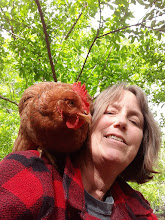This is our final week learning about the African Savanna.
This week Read:
One Small Square-African Savanna pages 24-36 Feel free to edit as needed for age and ability of your child.
Print out the Savanna booklet in the Habitats-Scienceworks book by Evan-Moor on pages 65-67. assemble the booklet and read to learn more about the grasslands habitat in Africa and other parts of the word. Discuss that grasslands exist in many places. Add this to your research pocket in the lapbook.
Print out the Savanna scene to color this happens to be in both the Evan-Moor habitats book and the Giant Science Resource book. It's page 64 in the Habitats book. Color it in and glue it to the back page of the file folder.
Now a game to review what we've learned. Set up a pretend water hole in the middle of the room or on a table. This can be just a bowl filled with water. In the water will be 12 of something with the numbers 1,2,3...12 on the bottom of each. So each item has a number. I happen to have 12 safari themed rubber duckies which I got from http://www.orientaltrading.com/. You can use anything that either floats or is ok to set in the water. Alternately use plastic animals you may already have and pre-assign each one a number that only you know.
Have child/ren take turns pulling something out of the water hole. They check which number they've gotten. Read the corresponding question to see if the child can answer it.
Questions and answers:
1. Why do zebras have stripes?- camouflage
2. African grasslands are also called what? -Savannas
3. Who eats the grasses in the grasslands?- The animals, specifically herd animals
4. Elephants and Giraffes like to eat what?- leaves and twigs
5. name of the tree which giraffes love?- Acacia
6. What helps some animals hide?- the tall grasses
7. When do grasslands stop growing?- the dry season
8. What season helps the grasses grow?- the rainy season
9. What lives perched on some African mammals and helps them by eating bugs?- Some birds (one specific the redbilled oxpecker)
10. What is a habitat?- a place where plants and animals naturally live
11. What is the largest land mammal?- African Elephant
12. Is Africa near where you live? - No (unless you do happen to live near Africa we're in the USA!)
For a prize for playing the game child receives bookmarks: http://www.activityvillage.co.uk/African%20animal%20bookmarks.pdf
print on card stock.These are nice and have facts on them in addition to pictures.
For a snack serve animal crackers or gummy animals.
Do a puzzle as more review. I found grasslands animals word searches (as well as other puzzles) at http://www.edhelper.com/. Or there is a free one here:
http://www.leesburganimalpark.com/KC_SavannahWordSearch.pdf
For older children, or little ones with help, print out the animal report form from the Giant Science resource book page 303 and choose one Savanna animal to research further. Choose one or more animals from pages 38-43 in One Small Square.
For older children or to extend the learning for younger kids try to activities in the sidebars on pages 35 and 36 in One Small Square. One is a predator and prey game (may be unsuitable for young sensitive kids) and one is a diorama. I'm not doing these in my co-op class due to time limitations but will be doing them with my own children as time allows.
Add puzzle, bookmarks and research paper to your research pocket on the file folder and now your Savanna lapbook is complete.
Friday, September 26, 2008
Subscribe to:
Post Comments (Atom)

No comments:
Post a Comment